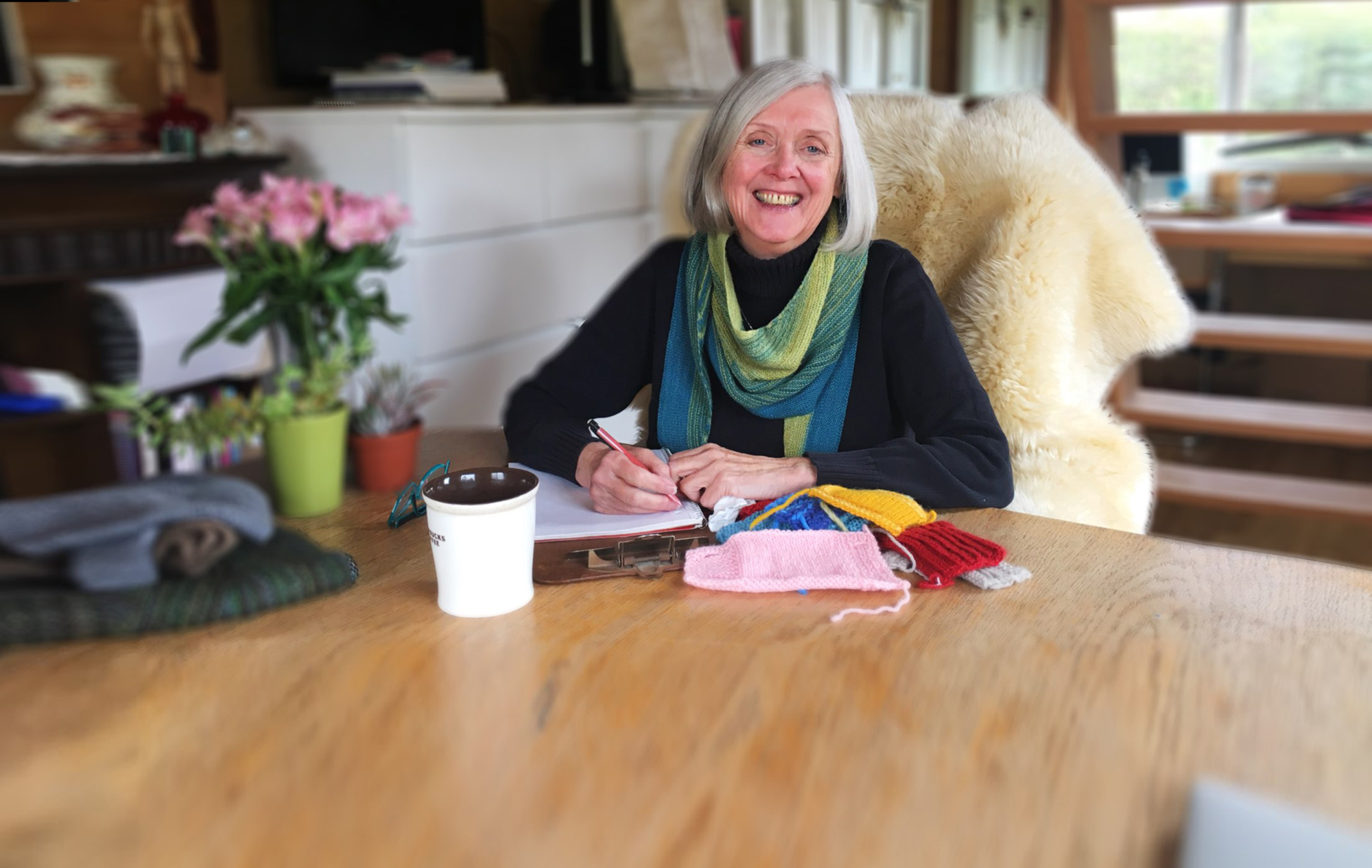This is a video article and here are the links to help you get the most from it:
- Why You’re Frustrated by Gauge and Why That’s Good News is the article I reference in the introduction.
- The Daphne Jumper Pattern is free from RedHeart UK.
- Use the Sloped Bind-off video for that neckline shaping.
- That very cool, very precise, proportional Knitter’s Graph Paper is available HERE and it’s free! I’ve used this resource for years and am so grateful for it. The last few times I downloaded grids I had to change the suffix to .pdf to get it to print properly.
- The More or Less Right Formula explained and a theoretical example of using it.
- The More or Less Right Formula used to calculate a sleeve pick up and shaping.
Here you go! And, as always, let me know what you think and let me know of any questions this brings up for you. In the comments. Below. 😀 So everyone can learn from what you have to say.

Cheryl
The part of this video where you put the back and front of the sweater together at the shoulders and then picked up stitches and knit the sleeves in, is the kind of information I treasure! How to knit in shoulder shaping for set in sleeves that does not make that awful stair step pattern that is so hard to set in!!! How to make a knitted piece not look “home made”. Those are the kinds of details and information I want! Thanks So Much!
bjr
Thank you for sharing this information and for all that you bring to knitters everywhere. Your practical help and down to earth style is refreshing.
Thank you for this kind comment Jane. I come from practical people. I’m just carrying on my family tradition. 🙂
I loved this explanation and your graphing the pattern. I’m going to get brave one of these days, cracked open my copy of Sweater 101, and finally do that sweater. You are inspiring!
I prefer crew necks. I’d like to see you explain 1) how to look at the pattern to adapt a different neck finishing, and 2) how to change neck measurements on the pattern to fit my real-life neck.
Thanks Batya. I’m working on a big project and adapting different necklines and finishes is one component.
Hi Cheryl…just viewed your new video….it has helped me immensely . I am starting to see how the information in Sweater 101 can be transplanted into me rejigging a pattern to suit my yarn and needles. I am so glad I came across you on you tube ….you have helped me tremency and taught me to think outside a written pattern…you are never to old to learn something new…A good day for knitting …40cm of snow down…and still snowing!
Hi Colleen. I know you were waiting for this one so I’m happy it has helped you. (I don’t always know when I make the videos how they’ll land). It’s really a different way of thinking about making sweaters but it has always made sense to me. Especially when I was working in the yarn shop years ago as the Tuesday Troubleshooter. Following sweater patterns exactly worked less than 10% of the time for people . . . they wanted a different yarn, couldn’t get the gauge, the pattern had mistakes, their arms were short, etc. etc. I figured that there had to be a better way. Sweater 101 grew out of my figuring out how to help our customers succeed with their sweaters. If I hadn’t worked there for my dear friend Dinah, I never would have known that my approach to patterns helped other people. I wasn’t even going to write a book but some knitting friends convinced me that it would be useful to others.
What a great video tutorial! It shows me how some simple math and the visual from the graph paper will let me make any pattern fit with my gauge. Wonderful! Thank you from the bottom of my heart.
Kathy D
Thank you Kathy!! And you are so welcome. It really is a lot simpler process than people think. There are always little details one can learn like a better cast-on for a given situation or how to measure a cardigan band, or a nicer button hole for the stitch combination you’re doing, but the basics are just arithmetic.
Thank you so much for all your clear, informative videos. They are the biggest help to me in achieving a final product I can be proud of.
You are so welcome Joan and thank you for this kind comment.
Thank you! This video explains the aspects of checking and modifying a pattern that I (until now) didn’t quite understand. How can such a simple concept seem so complicated? Now I feel like I could make any sweater pattern with the confidence that it will be wearable.
You are very welcome Rachel. The simple concept seems complicated because of the conventions of pattern writing. We have this protocol that people use that is cumbersome in its language and presentation. In fairness, people are presenting sometimes many sizes in one document and that also makes it seem complicated. By parsing out a single size/project and drawing it in visual form, the concept becomes uncluttered and clear. Congratulations on your newfound confidence.